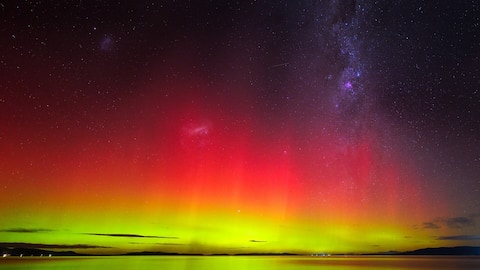2025 is the best year to watch aurora. Here's why
What's the story
2025 is shaping up to be an electrifying year—literally! Thanks to heightened solar activity, skywatchers around the world are in for a treat as the aurora borealis and aurora australis put on a dazzling, once-in-a-decade spectacle. These celestial light shows, caused by solar particles colliding with Earth's atmosphere, will appear more frequently and vibrantly than ever. Expect a mesmerising dance of green, red, and purple hues illuminating the night sky— get ready to witness nature's most breathtaking display!
Viewing spots
Ideal locations to witness the aurora borealis and Australis
The best places to catch a glimpse of these stunning lights are close to the poles. For the northern lights, or aurora borealis, the best places are northern Norway, Sweden, Finland, Iceland, Canada, and Alaska. Meanwhile, for those looking to see the southern lights or aurora australis, the best places are Antarctica, southern Chile, Argentina, New Zealand and Australia.
Solar influence
Solar activity fuels aurora phenomena
Auroras are caused by bursts of solar activity like solar flares and coronal mass ejections (CMEs). These events send charged particles and plasma from the Sun toward Earth. Most of them are redirected by Earth's magnetosphere, but some hit our atmosphere and create auroras. Astrophysicist Dr. Renate Mauland-Hus explains that "when these particles collide with nitrogen and oxygen atoms in the atmosphere, they release light as they return to their natural state."
Solar cycle
Solar maximum to boost aurora activity in 2025
The Sun follows 11-year cycles of activity, with solar maximum being the peak. We are currently in solar cycle 25 which started in late 2019. As Dr. Renate Mauland-Hus explains, the solar maximum will continue until mid-2025. This phase will see increased aurora activity with a predicted peak in July 2025. Even after solar maximum, auroras will remain frequent as "aurora activity can peak after solar maximum," notes Mauland-Hus.
Aurora myths
Legends and lore behind the celestial spectacle
Auroras have captivated humanity for centuries, sparking myths and folklore across cultures. The Vikings believed the northern lights were reflections of Valkyries' armour, while the Inuit saw them as spirits playing in the sky. In Japan, it's said that conceiving a child under the aurora brings good fortune. Meanwhile, some Indigenous American tribes viewed them as messages from ancestors. While science now explains auroras, these enchanting tales remind us of their timeless magic.
